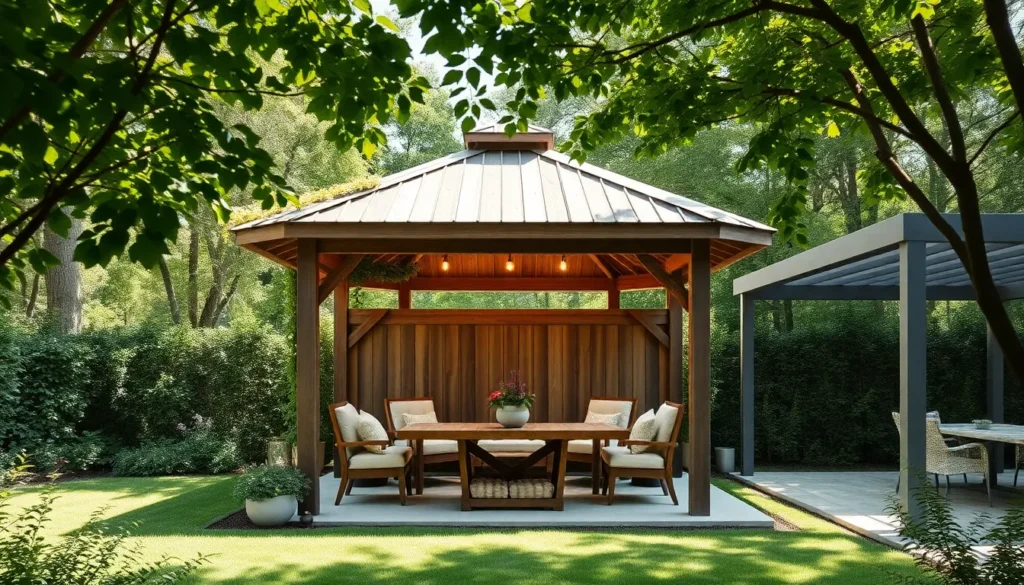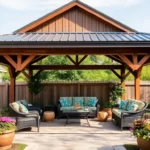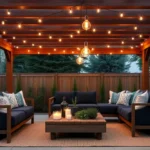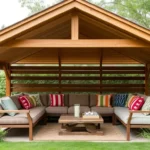Imagine transforming your backyard into a stunning oasis with a beautiful gazebo as the centerpiece, perfect for relaxing evenings and joyful gatherings. Whether you’re a DIY novice or a seasoned pro, our guide to “10 Beautiful DIY Gazebo Ideas for Your Backyard” is designed to spark your creativity and confidence, offering projects that suit every skill level and style preference.
In this guide, we’ve curated a collection of gazebo ideas that blend beauty with functionality, ensuring your outdoor space becomes a true extension of your home. From enhancing the aesthetic appeal to providing a cozy spot for entertaining, these projects promise practical benefits like added value and usability, all while celebrating the joy of outdoor living. Get ready to roll up your sleeves and create a backyard retreat that’s both personal and picturesque!
Incorporate Sustainable Building Materials
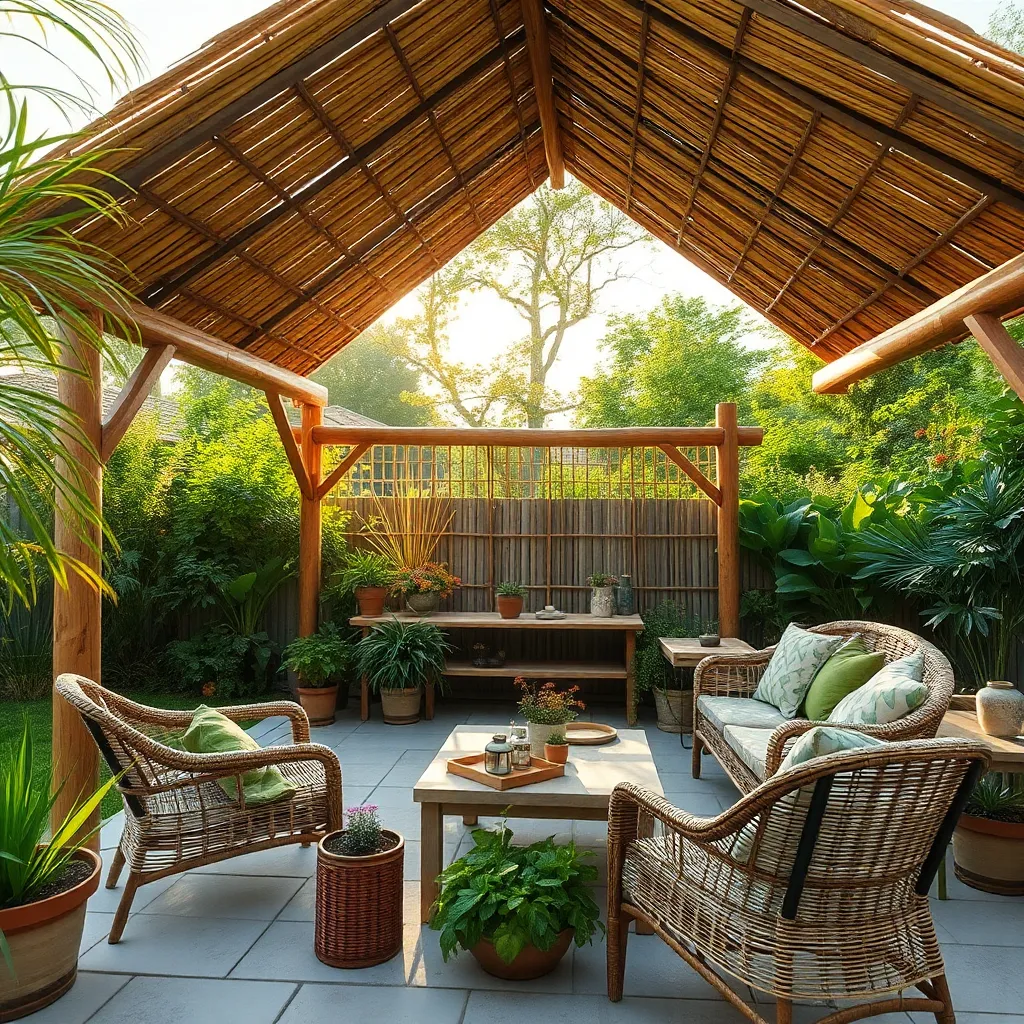
When building a DIY gazebo, consider using sustainable building materials such as reclaimed wood, bamboo, or recycled metal. These materials not only reduce environmental impact but often come with unique character and charm. For beginners, starting with reclaimed wood is a great choice, as it’s widely available and easy to work with; you can often find it at salvage yards or online marketplaces. Advanced builders might explore bamboo for its strength and flexibility, crafting intricate designs that are both eco-friendly and visually stunning.
Integrating sustainable elements can also include using recycled materials for other parts of your gazebo, like metal roofing or stone flooring. Ensure that the design incorporates practical features such as a rainwater collection system or solar lighting to enhance both sustainability and functionality. To maintain a natural look, use non-toxic, water-based stains and sealants that protect your structure while being kinder to the environment. These thoughtful choices not only contribute to a greener planet but also create a gazebo that’s a beautiful, long-lasting addition to your backyard.
Enhance Privacy with Lattice Walls
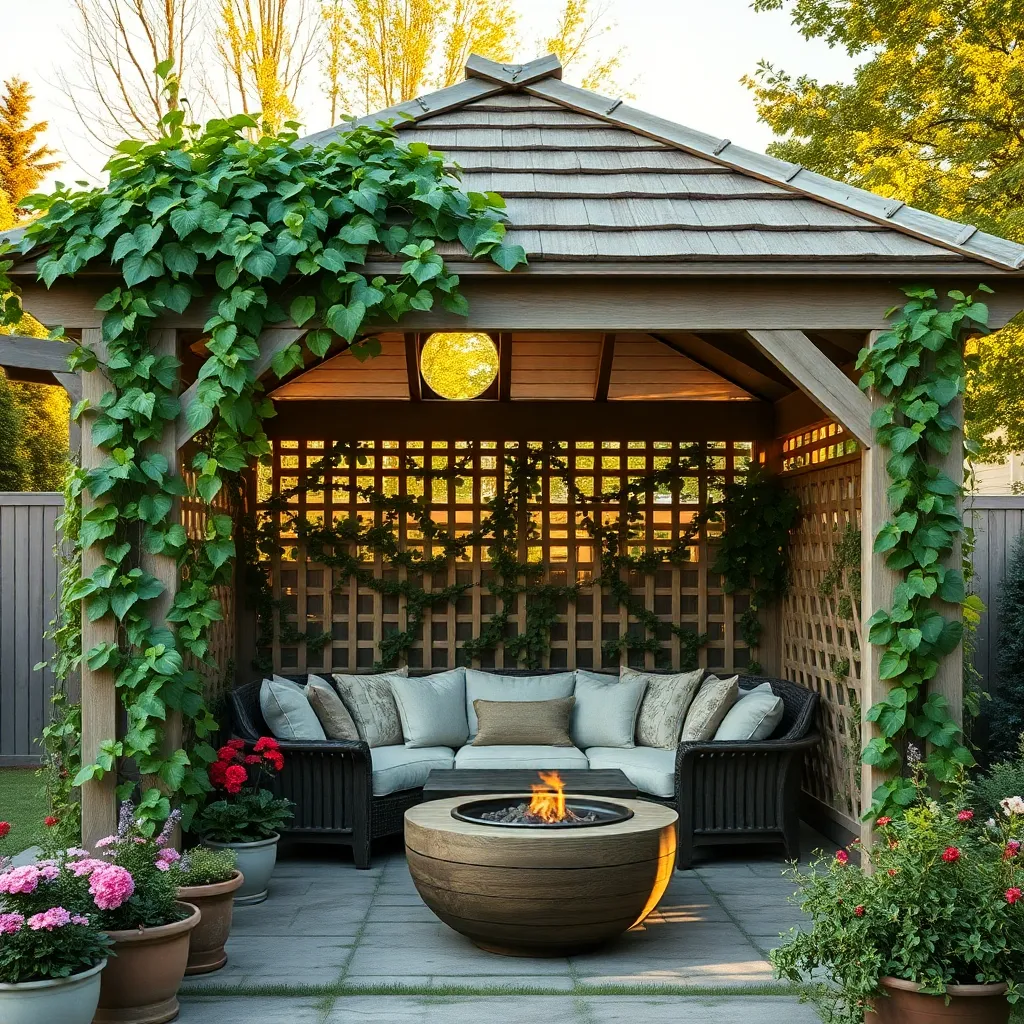
Lattice walls are an excellent way to enhance privacy in your gazebo while adding a touch of elegance. To start, choose materials like weather-resistant wood or vinyl, ensuring they can withstand the elements. Measure your gazebo’s dimensions carefully to cut the lattice panels to the right size. Consider a pattern like diagonal or square for a classic look, and secure the panels with sturdy outdoor screws or brackets for stability.
For those looking to add a personal touch, try incorporating climbing plants such as clematis or honeysuckle, which can weave through the lattice, providing additional coverage and beauty. Advanced gardeners might opt for pre-stained or painted lattice panels to match or contrast with their gazebo structure, offering an elevated aesthetic. Remember to leave some space between the lattice and the ground to prevent moisture buildup, ensuring longevity and minimal maintenance.
Add Charm with String Lighting
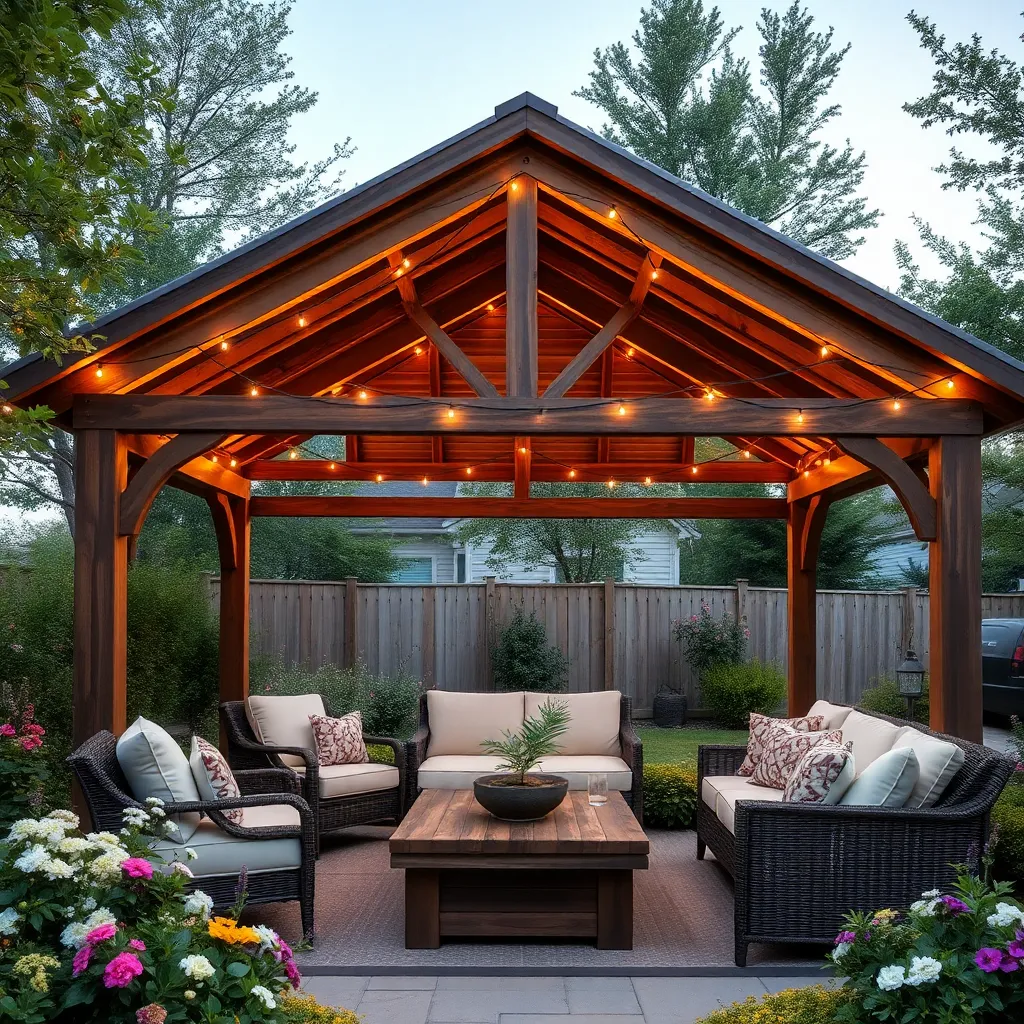
String lighting can transform your gazebo into a magical retreat with minimal effort. Start by selecting durable, weather-resistant string lights that can withstand the elements—LED lights are energy-efficient and provide a warm glow. For a simple installation, loop the lights around the gazebo’s perimeter or weave them through the rafters for a cozy ambiance. Ensure you have enough length to cover the desired area, typically about 1.5 to 2 times the gazebo’s perimeter for a full effect.
To elevate your design, consider hanging lights in a zigzag or crisscross pattern across the ceiling for a more dynamic look. For those seeking a more polished finish, use cup hooks or adhesive-backed hooks to secure the lights in place, ensuring they don’t sag over time. Incorporate solar-powered options if you’re looking to reduce energy usage or if an electrical outlet is unavailable. These simple touches not only enhance visibility but also add a touch of charm that invites evening relaxation and social gatherings.
Use Reclaimed Wood for Rustic Appeal
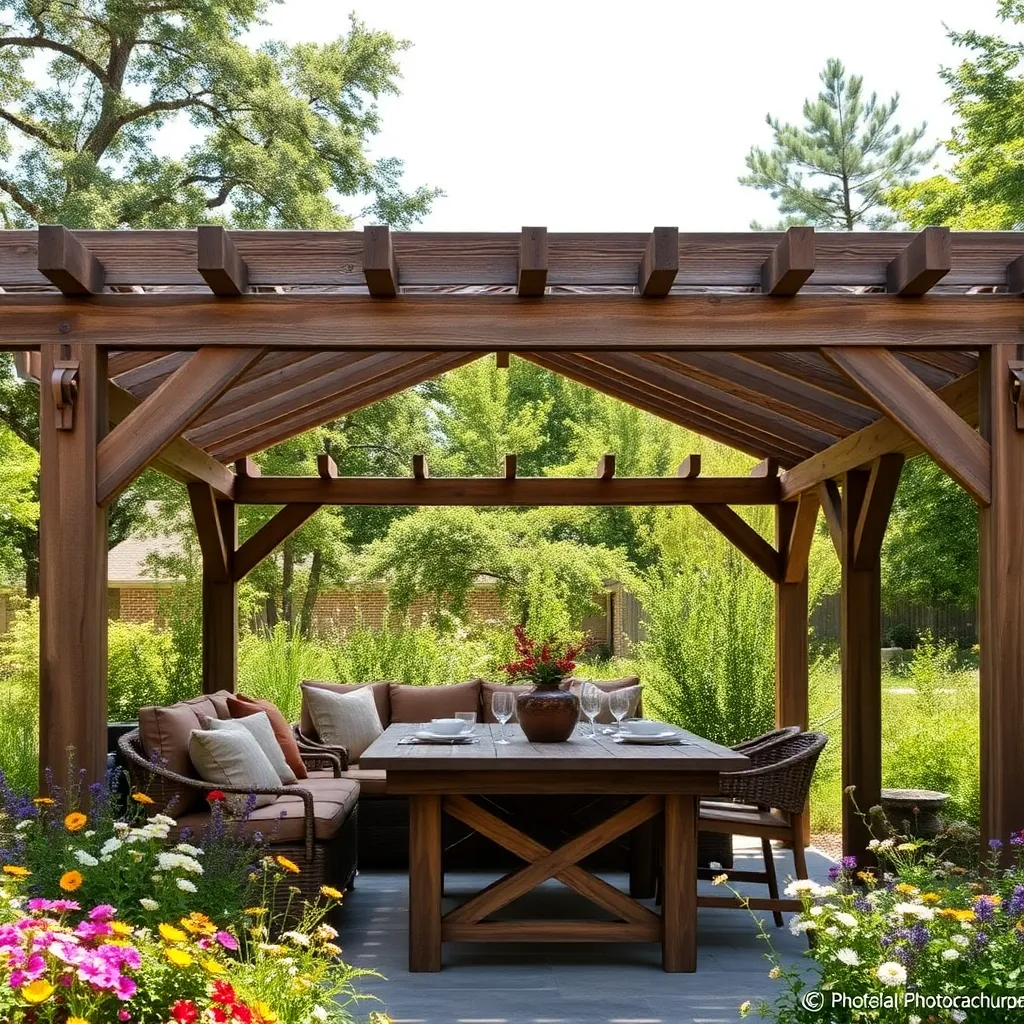
Embrace the charm of rustic design by using reclaimed wood to build your gazebo. This eco-friendly choice not only brings a unique character to your outdoor space but also often costs less than new lumber. Begin by sourcing reclaimed wood from local suppliers or online marketplaces, making sure to select pieces that are still sturdy and free from rot. When planning your gazebo, consider using a mix of different wood types to add texture and visual interest. Sand the wood thoroughly to remove any old finishes and ensure a smooth surface for painting or staining.
For beginners, start with a simple design like a square or rectangular gazebo, which can be more forgiving when working with irregular reclaimed wood sizes. Advanced builders might add intricate features like decorative rafter tails or a cupola for ventilation. Use a weather-resistant sealant to protect the wood from the elements, extending the life of your structure. To enhance the rustic appeal, consider adding metal brackets or hinges with a patina finish. These small touches can make a big impact, transforming your gazebo into a cozy retreat that’s both sustainable and stylish.
Opt for a Hexagonal Roof Design
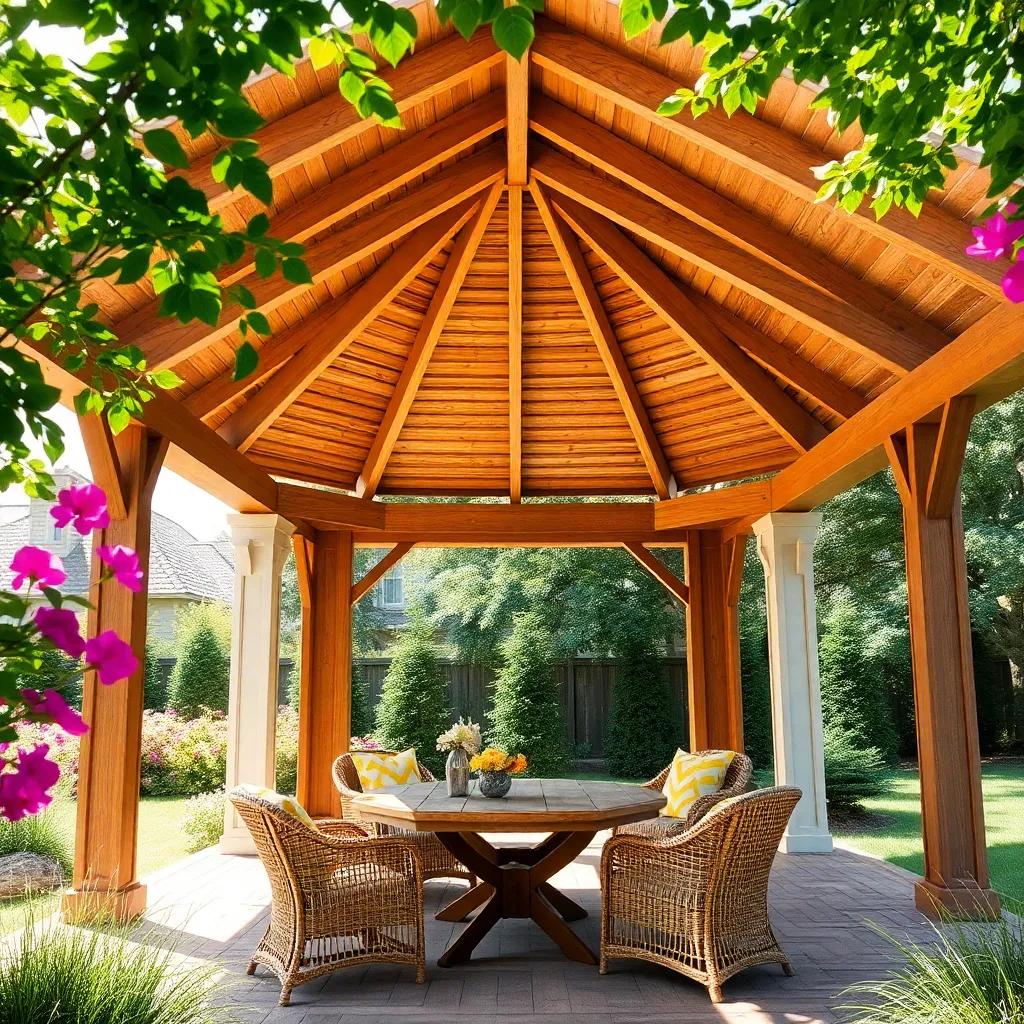
Choosing a hexagonal roof design for your gazebo can add a unique architectural flair to your backyard while enhancing its functionality. This shape not only provides an elegant aesthetic but also offers structural benefits, such as improved wind resistance and optimal water runoff. For beginners, consider using durable materials like pressure-treated wood or cedar shingles, which are both cost-effective and weather-resistant. Ensure to maintain equal side lengths to achieve a perfect hexagon, providing stability and symmetry to your structure.
For those with a bit more experience, incorporate decorative elements like exposed beams or a cupola on top of your hexagonal roof to create a standout feature. To ensure precision in your build, use a protractor to measure 120-degree angles for perfect alignment of each roof section. Advanced builders might opt for polycarbonate panels or metal roofing for added durability and a modern twist. Regardless of your skill level, this design can be tailored to fit any backyard space, making it a versatile choice for enhancing your outdoor living area.
Install Built-In Seating Areas
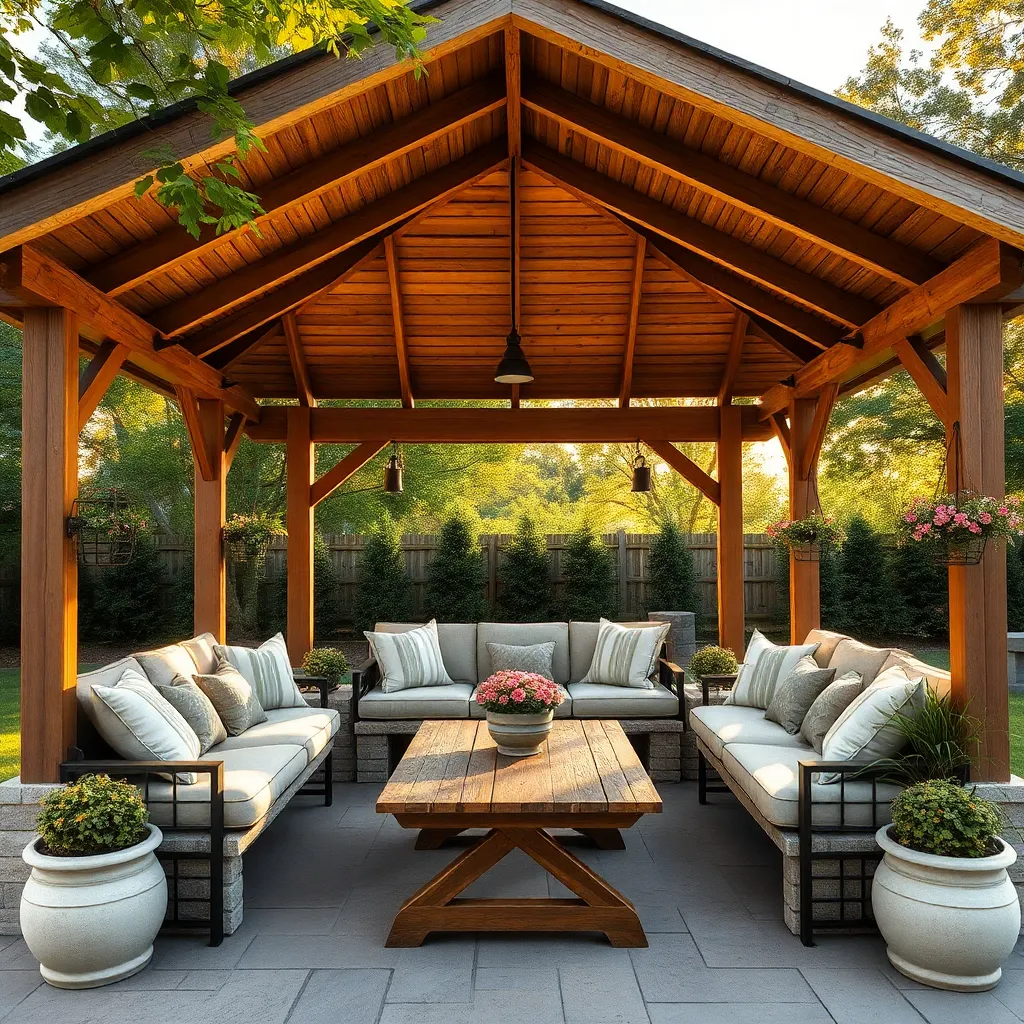
Incorporating built-in seating areas into your gazebo can transform it into a functional and inviting space. Consider using weather-resistant materials like treated wood or composite decking to ensure longevity against the elements. Design your seating to follow the natural lines of your gazebo, such as incorporating curved benches in a hexagonal structure to maximize space. For those new to DIY, starting with simple, straight benches can ease the construction process, while experienced builders might enjoy crafting custom-fit cushions for added comfort.
Adding storage beneath your built-in seats can enhance the utility of your gazebo, providing a perfect spot to tuck away cushions or gardening tools. Opt for hinged seating tops to access these storage areas easily. When planning dimensions, ensure that seats are about 18 inches high and 16-20 inches deep for optimal comfort. For an advanced touch, integrate ambient lighting under the seats to create a cozy atmosphere for evening gatherings. This blend of functionality and style will make your gazebo a favorite backyard retreat.
Create a Cozy Fire Pit Corner
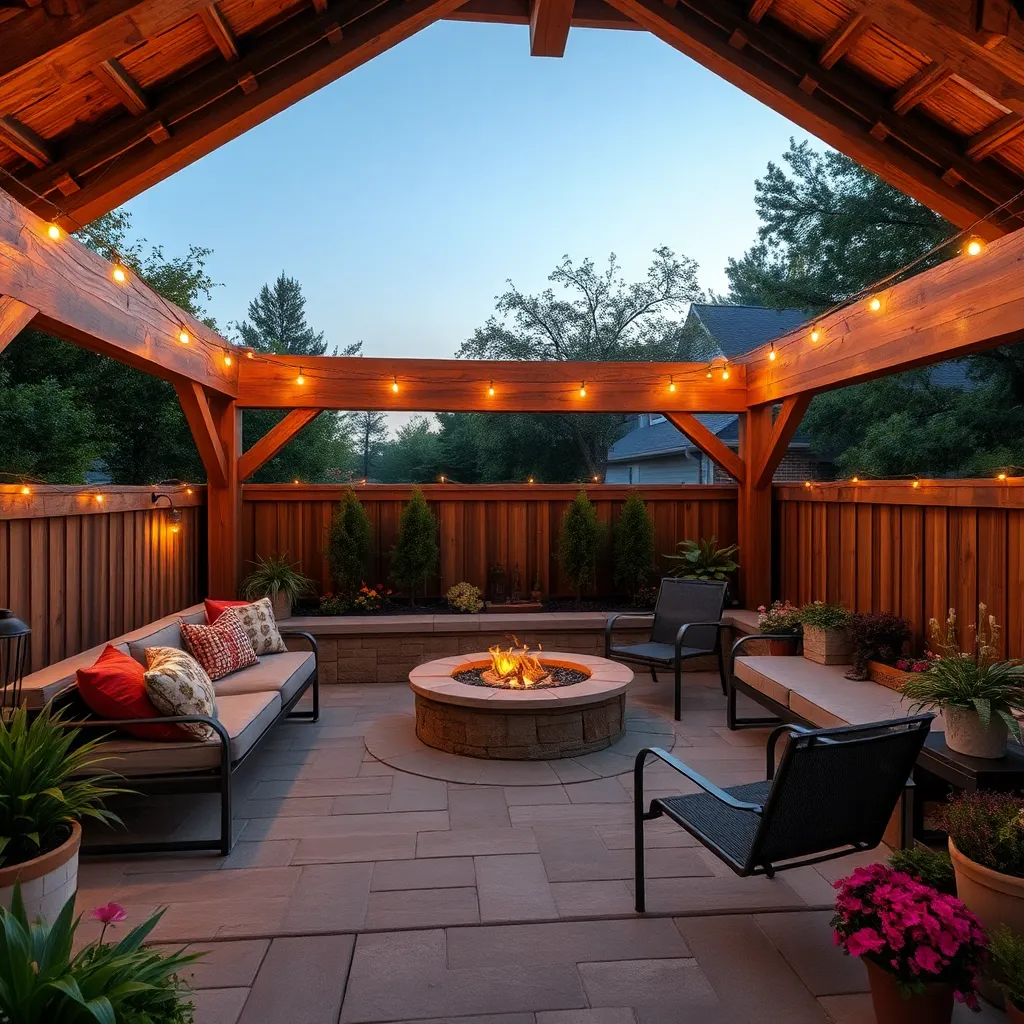
Transforming a corner of your yard into a cozy fire pit area is an inviting way to extend your outdoor living space. Begin by selecting a location that is safely distanced from trees and structures. For a simple yet effective setup, use pavers or fire-resistant bricks to construct a circular or square pit, ensuring it’s at least 36 inches in diameter to accommodate larger gatherings. Surround your pit with gravel or stone to create a defined space and enhance safety. Consider installing a metal fire ring insert to protect the bricks from heat damage, ensuring longevity.
To enhance comfort and style, add weather-resistant seating around your fire pit. Opt for durable materials like teak or powder-coated steel to withstand varying weather conditions. For a touch of luxury, incorporate outdoor cushions made from fade-resistant fabrics. Advanced tip: Install low-voltage lighting or solar-powered lanterns to create a warm ambiance during evening gatherings. Consider adding a pergola or a simple awning overhead to provide shelter from the elements, making your fire pit corner a year-round retreat.
Select Weather-Resistant Fabrics
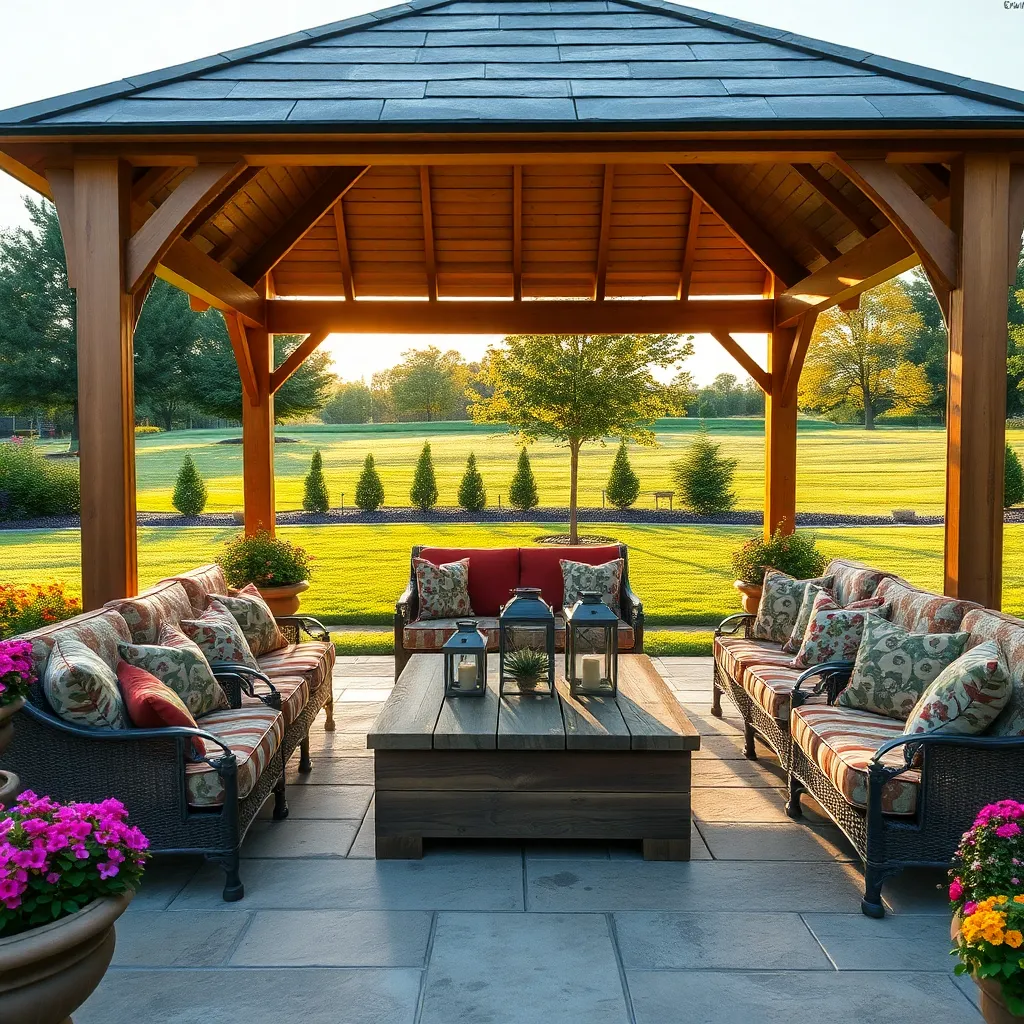
Choosing the right fabric for your gazebo is crucial for ensuring durability and comfort in any weather. Opt for weather-resistant materials like Sunbrella or polyester with a polyurethane coating, which provide excellent protection against UV rays, rain, and wind. These fabrics are not only durable but also easy to clean, making maintenance a breeze. To add a touch of style, consider selecting colors that complement your backyard’s palette, ensuring your gazebo becomes a seamless extension of your outdoor space.
For those looking to add a more personalized touch, consider incorporating customizable features such as removable side panels or curtains. These additions can offer extra protection from the elements and enhance privacy. When installing, ensure that the fabric is taut to prevent water pooling, which can lead to damage. Beginners should start with straightforward designs, while experienced DIYers might experiment with layered fabrics for added texture and insulation. Remember, investing in quality materials now will pay off with a long-lasting, beautiful gazebo that withstands the test of time.
Integrate Vertical Plant Gardens
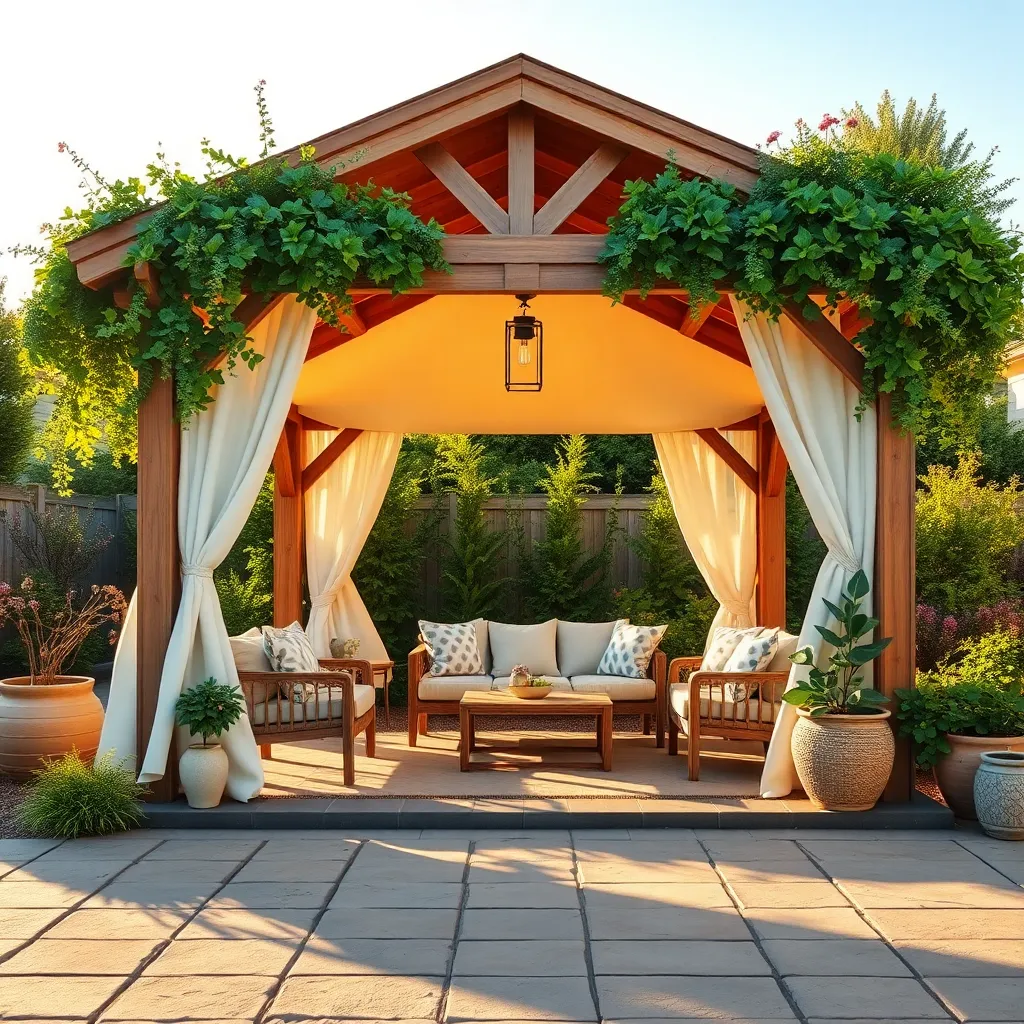
To enhance your gazebo with a touch of greenery, consider integrating a vertical plant garden. This not only maximizes space but also adds a lush, natural ambiance to your outdoor area. Start by selecting a sturdy frame, such as a wooden trellis or a metal grid, that can be securely attached to one side of the gazebo. Beginners might opt for easy-to-grow plants like herbs or succulents, which require minimal maintenance and thrive in vertical setups.
For those looking to create a more advanced vertical garden, consider incorporating an automatic watering system to ensure consistent moisture levels. Use lightweight soil mixtures and ensure proper drainage to prevent waterlogging. When choosing plants, think about the sun exposure your gazebo receives and select species accordingly. For instance, if your gazebo is in a sunny spot, opt for sun-loving plants such as lavender or strawberries. These design choices will not only beautify your gazebo but also encourage a sustainable gardening practice.
Paint With Earthy, Neutral Tones
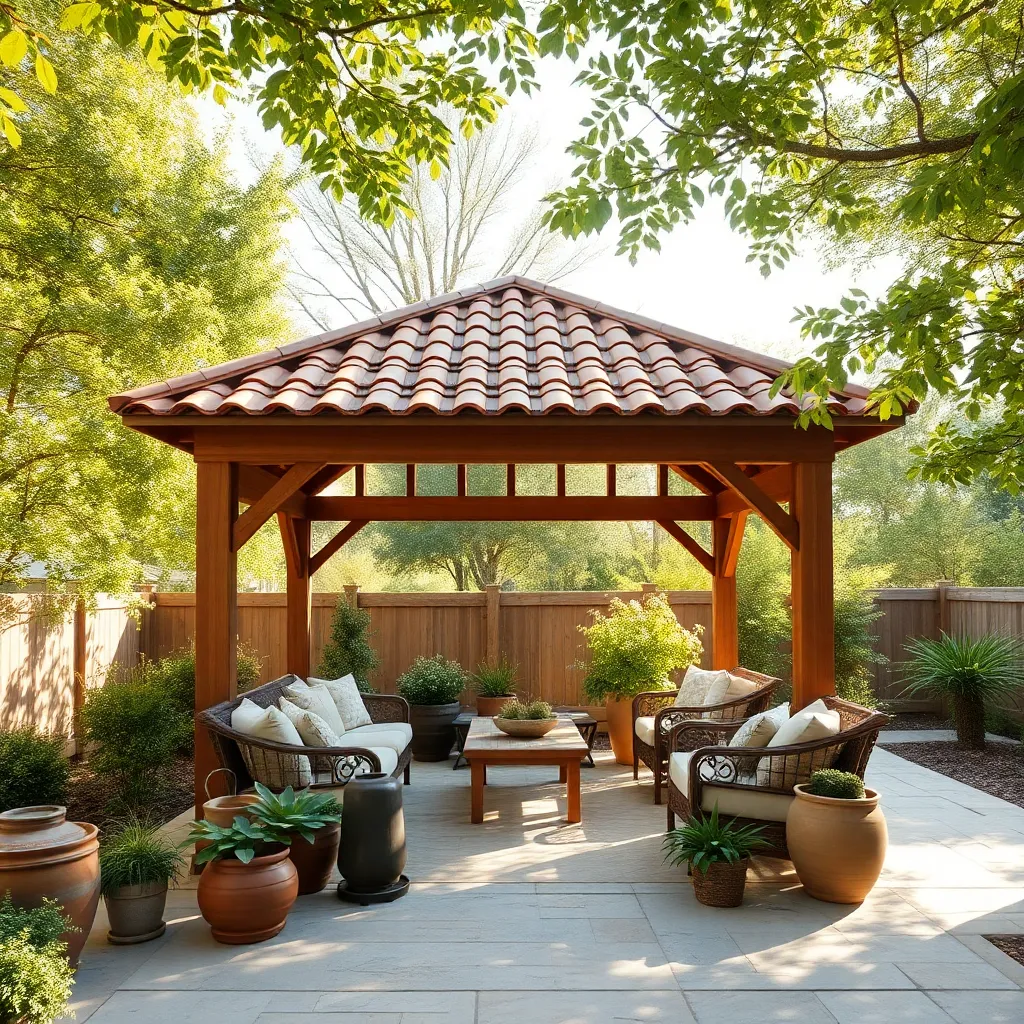
To create a serene and inviting atmosphere in your gazebo, consider painting it with earthy, neutral tones such as soft beiges, muted greens, and warm taupes. These colors blend seamlessly with natural surroundings and provide a calming backdrop for your outdoor retreat. Use weather-resistant exterior paint to ensure longevity, and aim for a matte or eggshell finish to minimize glare and enhance the cozy feel. Beginners can start by painting the main structure, while seasoned DIYers might consider adding subtle color variations on trims or posts for added depth.
For a more sophisticated look, incorporate natural materials like wood stains that highlight the gazebo’s grain and texture. Opt for shades that complement the surrounding landscape—think cedar or walnut tones for a rustic vibe. Advanced enthusiasts might experiment with a two-tone effect, using darker shades for the base and lighter shades for the upper sections. Not only does this add visual interest, but it also helps define the structure’s architectural lines. Remember, the goal is to enhance your outdoor space without overpowering the natural beauty around it.
Conclusion: Creating Beautiful Outdoor Spaces
Creating a beautiful DIY gazebo is not just about enhancing your backyard, but also about nurturing a space where relationships can flourish. In this article, we’ve explored 10 key concepts: intentional design, shared creativity, collaborative planning, mutual investment, attention to detail, adaptability, patience, resourcefulness, celebration of milestones, and the joy of simple pleasures. Each idea is a building block for more meaningful interactions and enduring connections.
As your next step, choose one concept that resonates most with your current relationship and discuss how you can incorporate it into your gazebo project. This shared endeavor can be the foundation for deeper communication and understanding.
Remember, beautiful relationships, like gazebos, require ongoing care and attention. Bookmark this article to keep these ideas at your fingertips, ensuring you have a handy guide to revisit as you continue to cultivate your relationship.
Looking ahead, envision your completed gazebo as a testament to your shared journey and commitment. With dedication and creativity, your relationship can thrive, transforming your backyard—and your lives—into a sanctuary of love and connection. Save this guide to ensure you have the inspiration you need to build and strengthen your bond.

